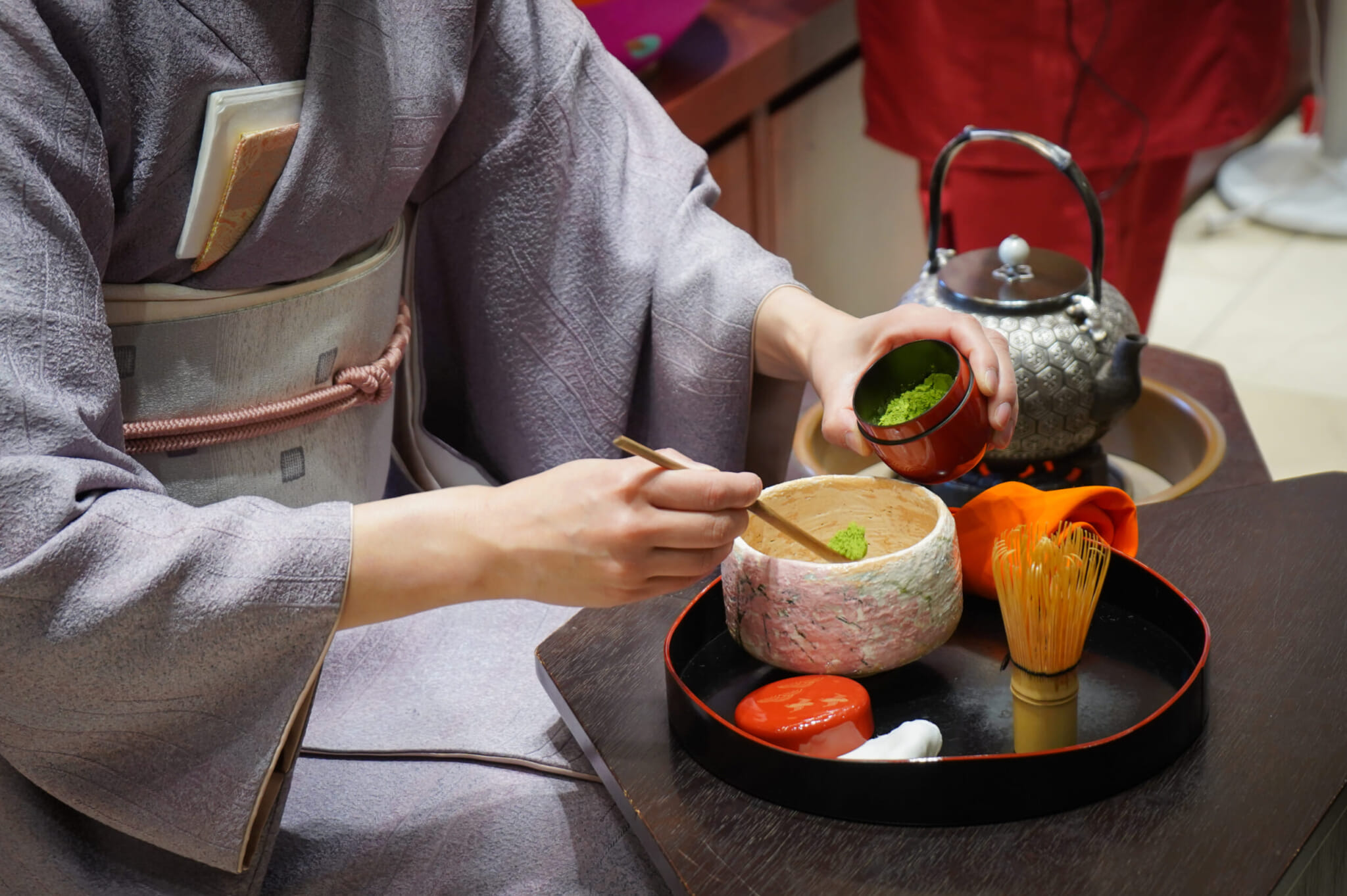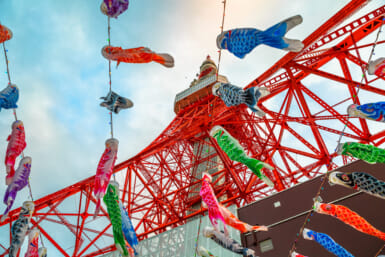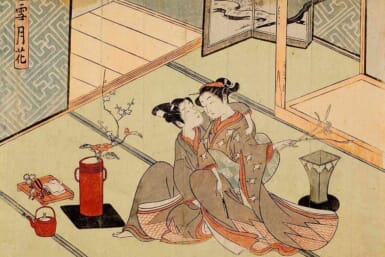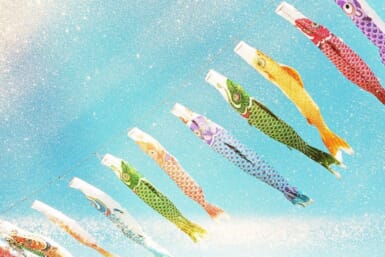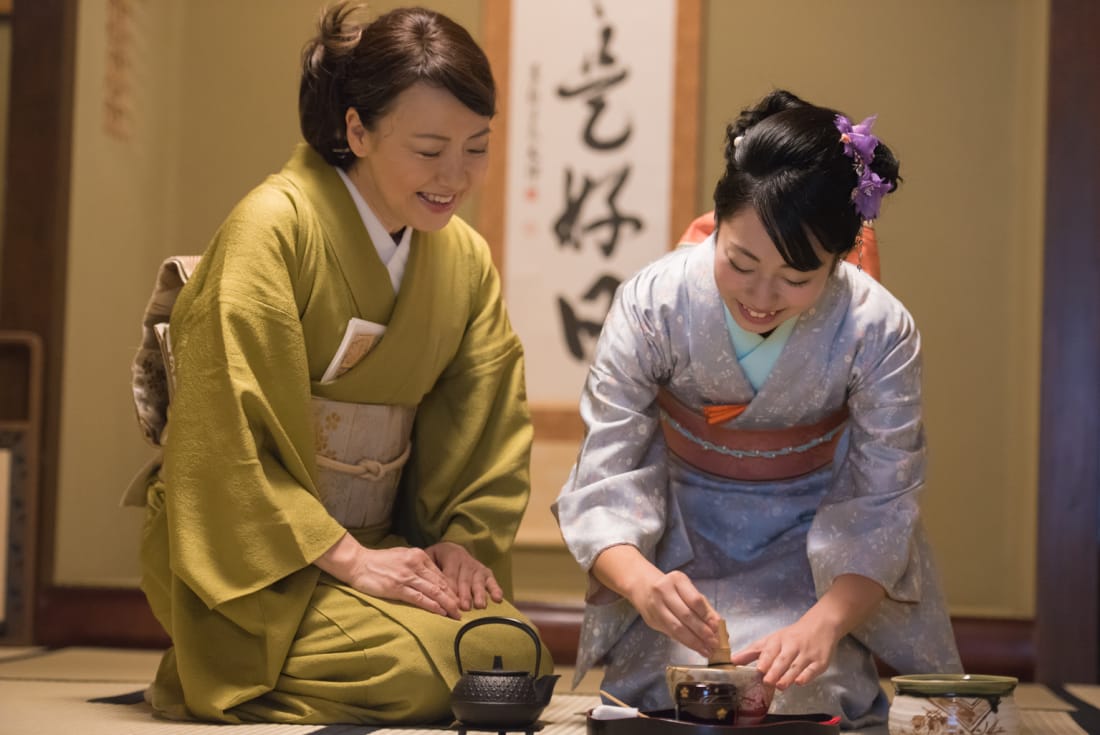
Shizu-Kokoro Tea Ceremony
“Chado teaches us that there are more important things in life than the material objects we all chase,” says Mika Soka Haneishi, the owner and instructor at Shizu Kokoro in Asakusa. In her 90-minute tea ceremony conducted in English, you will gain a greater understanding of the art by participating as both a host and a guest. Cherry blossom tea, koicha (strong tea) and usucha (lighter tea) as well as some wagashi (traditional confectionery) for the accompaniment will be provided. Each month has a distinctive theme, so you’ll find something new every time you go.
A group Japanese tea ceremony experience at Shizu-Kokoro starts at ¥4,620 per person. See the official website for more information on how to register.
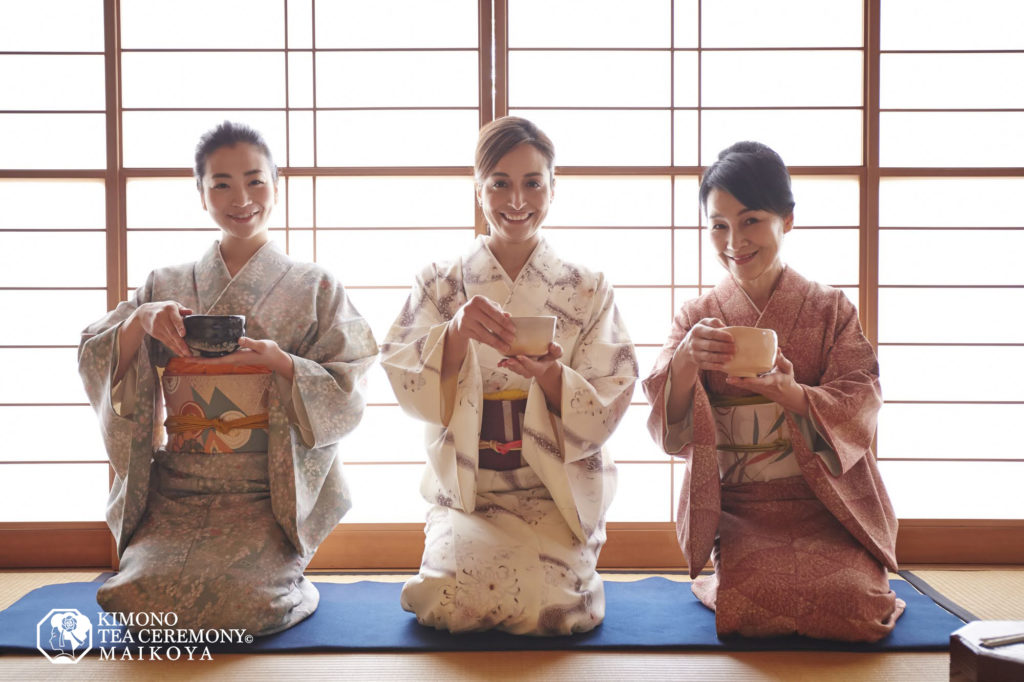
Kimono Tea Ceremony Kyoto Maikoya
Only a 12-minute walk from Shinjuku Station, you’ll find the unexpected: an oasis of tranquillity and calm. At Maikoya, an expert instructor will walk you through the etiquette and details of the Japanese tea ceremony, all in English. From there, you can perform the ritual yourself and further understand the meaning of chado. Maikoya provides combined experiences too, offering a tea ceremony paired with kimono dressing, wagashi sweets making, a kaiseki lunch and more. It also has other cultural activities such as flower arrangement, calligraphy and origami. Unsurprisingly, it has many glowing reviews.
A Japanese tea experience in a kimono at Maikoya starts at ¥6,000 per person. For more information and other options, please visit the official website.
Chazen Tea Ceremony
Rie Takeda is a certified professor and has been spreading her expert knowledge of tea ceremonies for over 30 years. She founded Chazen in Ginza, next to the Kabuki-za theatre first, expanding to a second location in Asakusa. Visitors can book a tea ceremony experience in either location, while the Asakusa one also offers a wagashi sweets-making experience too.
A Japanese tea experience at Chazen starts at ¥3,500 per person. Advanced reservations are required. Please visit the official website to reserve and find out more about Chazen.
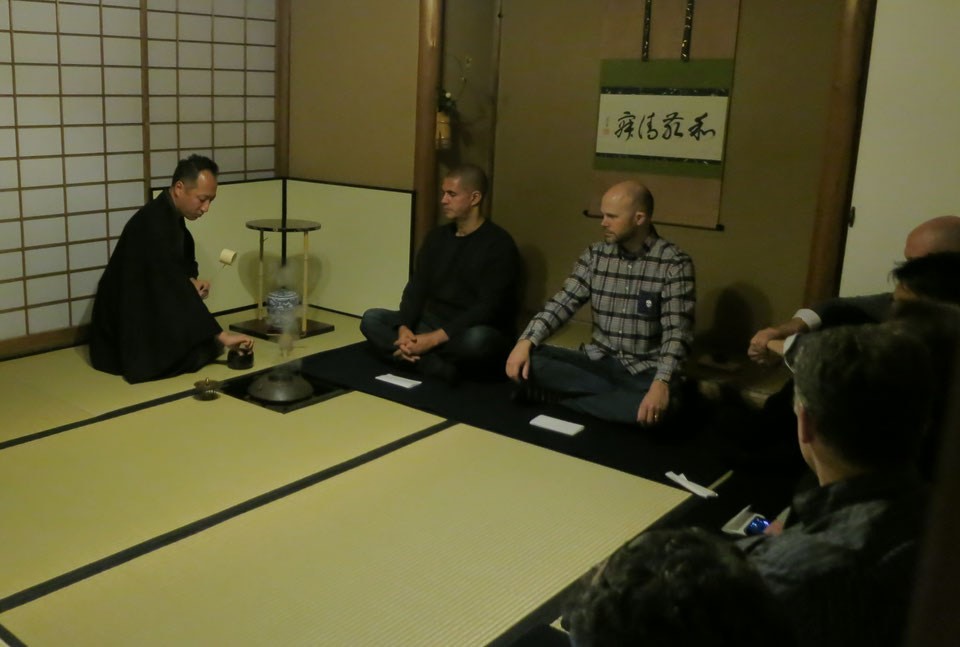
Urasenke Youwakai Tea Ceremony
This tea ceremony experience is led by one of the biggest chado schools in Japan: Urasenke. Opening the door to all nationalities, the aim is to bring the principles and traditions of chado to different cultures. It’s conveniently located in Omotesando, so it’s easy to access from Shibuya, Harajuku and Roppongi.
A Japanese tea experience at Youwakai starts at ¥6,000 +tax per person (minimum 3 people). For more information, please visit the official website.
Fukagawa Geisha Tea Ceremony
Two iconic traditional cultures combined; this tea ceremony is conducted by authentic geisha. After all, the tea ceremony is one of the arts that every trainee geisha studies.
Although Kyoto is more known for its geisha culture, Tokyo also has real geisha, albeit unassuming and not seen on the streets. The Fukugawa geisha were the first in Edo (old Tokyo) and were later relocated to the famous Yoshiwara district in the 19th century.
Today, the Fukugawa Geisha can be contacted to book a geisha experience and one of the offers is a tea ceremony which costs ¥7,000. Some of the geisha speak English too, so it’s a tea ceremony recommended for foreign visitors.
Jugetsudo Tea Ceremony
Jugetsudo takes tea ceremony and puts it in a slightly more modern, but still uniquely Japanese, setting. It’s a café, designed by renowned architect, Kengo Kuma, and surrounded by around 3,000 bamboo trees. Located in Ginza, on the fifth floor of the Kabukiza Tower, it’s in the same building as Tokyo’s most illustrious kabuki theatre. So, you can have a whole day of Japanese cultural experiences.
The tea ceremony at Jugetsudo has beginners in mind, with experts carefully explaining how to make and drink matcha. The lesson is available in English as well. Reservations must be made in advance and the capacity is 10 people. The 45-minute tea experience costs ¥6,000 and it includes the drinks and the matcha-making set for beginners to take back as a present.
Jidaiya Tea Ceremony
Jidaiya offers various cultural experiences, including a tea ceremony, kimono rental, calligraphy, ikebana flower arrangement and more. Located in Asakusa, in the heart of old Tokyo, it’s easy to combine a tea ceremony experience with sightseeing.
The tea ceremony at Jidaiya has an English-speaking instructor and further accommodates tourists by encouraging photo-taking. You can also choose between sitting on the tatami floor or in a room with chairs. You can make a reservation and join a group of strangers or reserve a chartered tea ceremony only for your group. The tea ceremony experience can be combined with wearing a kimono or a lighter yukata for an additional price. The price for just the tea ceremony is ¥8,800 for a private one-person booking and ¥4,400 per person for two or more people.
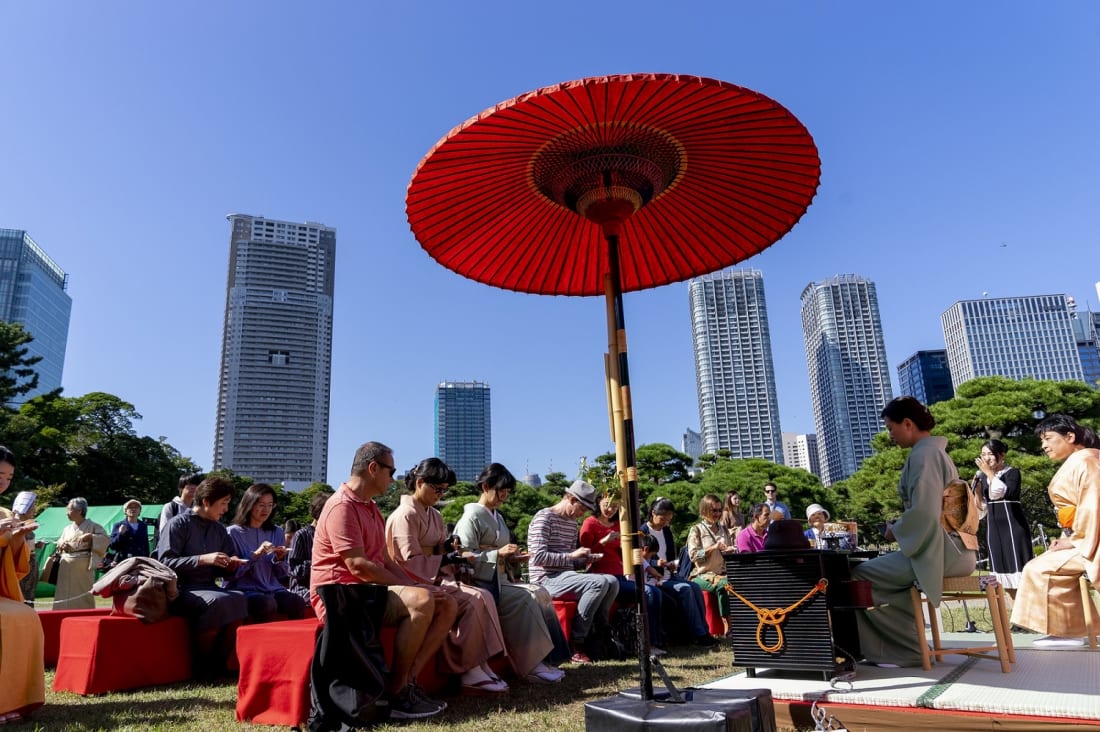
Bonus: Traditional Matcha at Three Japanese Gardens
Tokyo’s gardens have more to offer in addition to beautiful scenery. Behind the sliding doors of their teahouses, there’s a chance to glimpse a traditional tea ceremony. Though not the full detailed ceremony, you can always experience the core of the practice by drinking traditional matcha and eating wagashi sweets sitting on a tatami floor.
Shinjuku Gyoen has a ticket machine for a quick cup of matcha and a wagashi sweet. Get your ticket, step inside the established Rakutei teahouse, take off your shoes and get cozy on the tatami floor while waiting for your tea.
Hamarikyu‘s Nakajima-no-ochaya teahouse used to be a hotspot for Japan’s elite in the 18th and 19th centuries. Shoguns would unwind here and observe the sweeping views of the park’s pond and flora. To this day, it remains a place to relax with a warm drink. If you are lucky, you can catch the yearly tea ceremony with English instructions that’s held every October.
For a luxurious tea experience, enter the Muan teahouse in Happo-en. While there’s up to a two-month wait for a full tea ceremony, you can drop in for an informal experience and sit beneath a forest of lush greenery any time.
Learn more about tea culture in Japan:
- A Day in the Life of a Japanese Tea Ceremony Host
- The Ultimate Guide to the Best Japanese Sweets to Pair with Green Tea
- A Cozy Cup of History: Enjoying Kyushu Teas
This article was originally written by Alexandra Ziminski. It was later updated by TW editorial staff.

